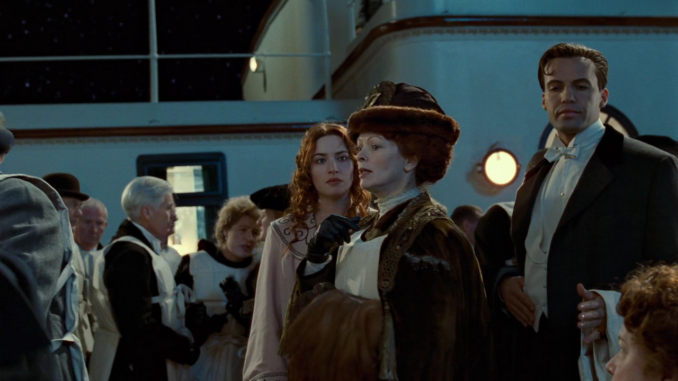
James Cameron selected shorter background actors to work on Titanic to make the set look bigger, the director has said.
With the 1997 blockbuster costing £160 million to make, to keep costs from ballooning any further filmmakers had to find creative ways to convey the vast scale of the doomed ocean liner.
Cameron said that instead of spending more of the film’s budget on larger sets, short extras were used to make the backdrops aboard the Titanic seem suitably grand.
The director said: “We only cast short extras so it made our set look bigger.

“Anybody above five foot eight, we didn’t cast them. It’s like we got an extra million dollars of value out of casting.”
The film had a core team of around 150 extras, all of whom were given names and detailed backstories to reflect the real-life experiences of those who sailed on the Titanic during its ill-fated voyage across the Atlantic in 1912.
The casting of short extras was one of many tricks intended to prevent costs from spiralling as filmmakers feared the investment in the production would not be made back in profit as a consequence of the enormous expense of the sets.
The production used a replica ship that was 15 per cent smaller than the actual Titanic, placed in a giant outdoor water tank in Mexico.

As well as the hull being shorter, the chimney stacks were also made more squat than those on the original vessel.
An entire planned set which could be tilted three degrees was scrapped in favour of a level pre-sinking set, and a set for sinking sequences pitched at an angle.
Producer Jon Landau has said that giving up on the three-degree tilt saved around $750,000.
Speaking to the LA Times, Cameron said: “The scale of everything was beyond anything we could imagine in terms of our prior experience. At the time we thought, wow, there’s no way this movie could ever make its money back. It’s just impossible.”
Following its release, Titanic became a global hit and the highest-grossing film of all time, taking more than £1 billion at the box office during its initial run, until Cameron’s 2010 film Avatar beat the record.
The film also won 11 Oscars at the 1998 Academy Awards, including best picture and a best actress honour for Kate Winslet, who played the female lead Rose DeWitt Bukater.

While the film proved a hit, its director had to calm the fears of Fox production executives during filming, and he has revealed in the past that the enormously expensive scaled-down set was itself a compromise.
In 2022, Cameron said that he had explored having a Polish shipyard simply build a functioning ocean liner to use for the production of Titanic.
In the end, the idea was scuppered by the fact that sinking a real ship would allow for only one take of the dramatic loss of the Titanic.
The partial sinking of the final replica set, which could be tilted to ensure a large portion of the fake vessel was submerged, was difficult enough to justify to executives, Cameron said. “If the studio had had their way, they would have cut the entire ship sinking,” he explained.
“The smartest thing we did was do the sinking last. It wasn’t because of strategy – it was simply because you sink the set last because otherwise it doesn’t look so good the next morning when you bring it back up.”

Cameron’s set was built with historical accuracy in mind, and the china and silverware seen on screen were all stamped with the insignia of the White Star Line, the company that operated the Titanic.
The director’s insistence on accuracy led him to conduct an experiment to see if the male lead character of Jack Dawson, played by Leonardo DiCaprio, could have survived if given room on the floating door which spared Rose.
The experiment to settle a long-running cinematic debate among Titanic fans was conducted earlier this year in a freezing pool in New Zealand, and led Cameron to conclude that Jack “might have lived” had he clambered on to the door.
